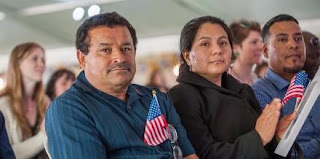May 24, 2017, marked Yom Yerushalayim, or Jerusalem Day in English. The annual Israeli holiday marks the historic reunification of Israel's eternal capital in 1967. The 2017 edition of the holiday was special in that it marked the fiftieth anniversary of Jerusalem's reunification.
In 1967, when the then Defense Minister of Israel, Moishe Dayan, visited the Western Wall for the first time, he stated:
“We have returned to all that is holy in our land. We have returned never to be parted from it again.”
Each Jerusalem Day, we remember Dayan's poignant remarks in 1967. For us citizens of Israel, the Jewish people, and supporters of Israel all across the world, each Jerusalem Day marks a special occasion. Once again, Jerusalem was unified under Israel. Once again, the people of Israel could pray at the Western Wall. Once again, the people who turned Jerusalem into a cradle of Western Civilization would run Jerusalem in its entirety as a free and vibrant city. We remember Dayan's jubilance at returning home, and remember his pledge that the Jewish people shall “never … be parted from it again.”
For the special occasion, I would like to share some videos and remarks with readers.
First, courtesy of Israel's Foreign Affairs Ministry, Deputy Foreign Minister Tzipi Hotovely [see here].
“My generation was fortunate to be born to the reality of Jerusalem reunited. I think that this is our duty to promise the next generations that we will always keep it united.”
Next, also courtesy of Israel's Foreign Affairs Ministry, the Mayor of the unified capital, Nir Barkat [see here].
“For me, walking the streets of Jerusalem, right behind me where kings and prophets walked 3,000 years ago, is a connection to my past, connection to the bible, connection to the stones of the city that speak to you.”
Mayor Barkat continued:
“For me, Jerusalem is a symbol of togetherness, of unity, for Jerusalem, for the people of Jerusalem, for the State of Israel, and the world as a whole.”
For Hebrew-speaking readers, the following are remarks delivered by Prime Minister Benjamin Netanyahu at a special Knesset session in honor of the fiftieth anniversary of the liberation and reunification of Jerusalem [see here].
Jerusalem Day was not only observed in Israel, but also acknowledged in the United States Senate. The following are remarks delivered by Senator Ted Cruz of Texas, one of America's leading supporters of Israel, on the Senate floor in commemoration of Yom Yerushalayim [see here].
You may also read Senator Cruz's remarks in their entirety here [PDF version].
Senator Cruz offered a detailed explanation of the state of Jordan-occupied East Jerusalem before it was liberated by Israel in 1967:
“The Arab armies failed to destroy the newly established Jewish State, but Jerusalem, the ancient and holy city central to the identity of the Jewish people, was left divided and occupied by Jordan. Residents of the Old City were murdered or expelled. Jews were prohibited from visiting and praying at the Temple Mount and Western Wall, their synagogues were destroyed and their cemeteries — such as the Mount of Olives — were desecrated. Access for Christians to their holy sites [was] also severely restricted.”
Senator Cruz detailed the liberation and reunification of Jerusalem:
“Outnumbered, outgunned, and against all odds, in the face of external pressure not to act first to ensure its survival, the Jewish State launched a successful, preemptive strike against its hostile neighbors and prevailed in a defensive war. When it was over, Jerusalem was liberated — reuniting the city and Judaism's holiest sites with the Jewish people, and putting an end to almost two decades of exclusion from the Old City.”
Senator Cruz continued:
“Today is a day where we must also reassert historical truth: The historic connection of the Jewish people to Jerusalem and the land of Israel did not begin in 1967. The profound ties to Jerusalem have existed for thousands of years. They can be traced back and have been reaffirmed through numerous archaeological excavations such as those in the City of David.”
Although this may seem self-evident, this obvious assertion by Senator Cruz has not always been reflected in United States policy. For this point, please see my post on the decision of the previous administration to betray Israel at the United Nations last December [see blog].
To be sure, Jerusalem will remain Israel's undivided capital regardless of the opinions of other countries. However, the ability of Israel to defend itself and its capital is not an invitation for other countries to deny the truth. It is indeed perplexing that free and Western countries continue to deny the fact that Jerusalem is the undividable capital of Israel. During his campaign, President Donald Trump strongly suggested that he would move the U.S. Embassy in Israel to Jerusalem. This move would not only be the right thing to do, but it is also long overdue. Thus far, the Trump Administration appears to remain open to the move, but it has taken no action to make it happen. Fortunately, there are voices in the Trump Administration pushing for him to reverse decades of mistaken U.S. policy and fulfill his promise.
The following are remarks by our Ambassador to the United Nations, Nikki Haley, in a discussion with David Brody of the Christian Broadcasting Network:
“Obviously I believe that the capital should be in Jerusalem and the embassy should be moved to Jerusalem … So much of what goes on is in Jerusalem and I think we have to see that for what it is.”[1]
In the same interview, Ambassador Haley asserted boldly, and in contrast to equivocating statements from other officials in the Trump Administration, the obvious truth that the Western Wall is part of Israel:
“I don't know what the policy of the administration is[,] but I believe the Western Wall is part of Israel[,] and I think that is how we've always seen it and that's how we should pursue it.”[2]
You may see an excerpt of Ambassador Halely's remarks here.
Senator Cruz concluded his Jerusalem Day remarks by calling for the long overdue move of the U.S. Embassy to Jerusalem:
“It is long past time that America do something it should have done two decades ago: move the American embassy to Jerusalem and formally recognize Jerusalem as Israel's eternal and undivided capital. Every nation on Earth, our embassy is in its capital city except for Israel. There is no reason Israel should be treated any worse when they are such a reliable and unshakeable ally. We should honor the promise that Democratic presidents and Republican presidents have made for decades and move our embassy to Jerusalem.”
In early May, Prime Minister Benjamin Netanyahu left no doubt as to Israel's position:
“Israel's stance is that all embassies belong in Israel's capital of Jerusalem, and the [U.S.] Embassy should be the first one to move.”[3]
Jerusalem was liberated and reunified 50 years ago. As Dayan promised, it shall forever remain so. Let us hope that the 51st Yom Yerushalayim will not only be celebrated by millions around the world, but will also be marked by the formal recognition of the United States and others that Jerusalem is in fact Israel's indivisible capital.
Please visit the nyc immigration lawyers website for further information. The Law Offices of Grinberg & Segal, PLLC focuses vast segment of its practice on immigration law. This steadfast dedication has resulted in thousands of immigrants throughout the United States.
- Brody, David. “Brody File Exclusive: Ambassador Nikki Haley Says U.S. Embassy Should Be Moved to Jerusalem.” CBN News. (May 16, 2017.) www1.cbn.com
- Brody, David. “Brody File Exclusive: Ambassador Nikki Haley Says Western Wall Is Part of Israel.” CBN News. (May 16, 2017.) www1.cbn.com
- Keidar, Nitsan. “Netanyahu: Every country should move their Embassy to Jerusalem.” Arutz Sheva 7. (May 10, 2017.) israelnationalnews.com
Lawyer website: http://myattorneyusa.com














